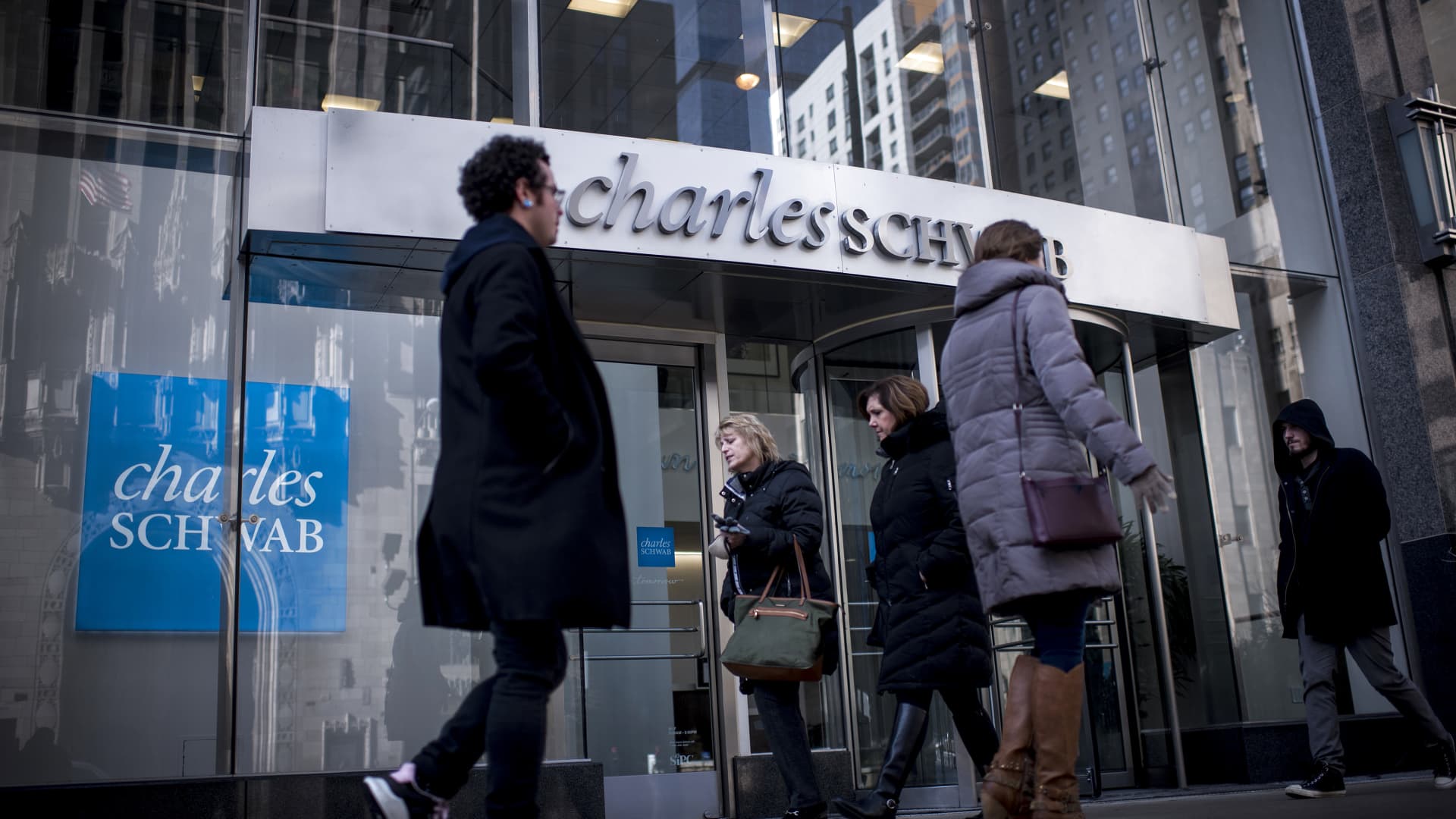Charles Schwab shares fell on Monday even as the financial institution defended its portfolio, easing fears of a banking crisis in the aftermath of tech-focused Silicon Valley Bank‘s and crypto-related Signature Bank‘s collapses.
The Westlake, Texas-based financial company closed the session 11.6% lower after dropping as much as 23.3% earlier. The stock was at one point on track for its worst one-day sell-off ever.
Schwab was taking hits along with other financial firms with massive bond holdings of longer maturities. The fear is that these firms, like Silicon Valley Bank, would need to sell these holdings early at large losses in order to cover deposit withdrawals. But Schwab in its update sought to reiterate that it has plenty of access to liquidity and a low loan-to-deposit ratio.
“Focusing attention on unrealized losses within HTM (Held-to-Maturity portfolio) has two logical flaws,” Schwab said. “First, those securities will mature at par, and given our significant access to other sources of liquidity there is very little chance that we’d need to sell them prior to maturity (as the name implies).”
“Second, by looking at unrealized losses among HTM securities, but not doing the same for traditional banks’ loan portfolios, the analysis penalizes firms like Schwab that in fact have a higher quality, more liquid, and more transparent balance sheet,” the firm added.
Schwab also noted that more than 80% of its total bank deposits fall within the insurance limits of the Federal Deposit Insurance Corp., adding it has “access to significant liquidity” and its business continues to “perform exceptionally well.”
‘Compelling entry point’?
Schwab is the eighth-biggest U.S. bank by assets with $7.05 trillion in client assets and 33.8 million active brokerage accounts at the end of 2022. Because of its retail brokerage deposit model with ample liquidity, some Wall Street analysts think it won’t face a run like SVB did.
“Due to robust supplemental liquidity sources, we think it is…
Read the full article here

Leave a Reply